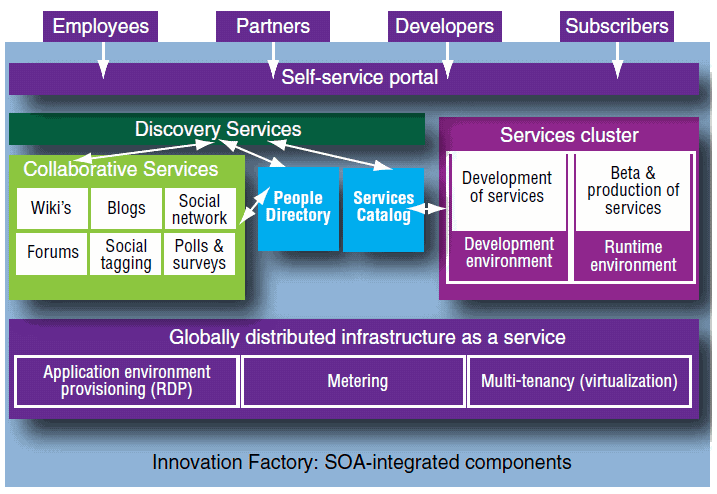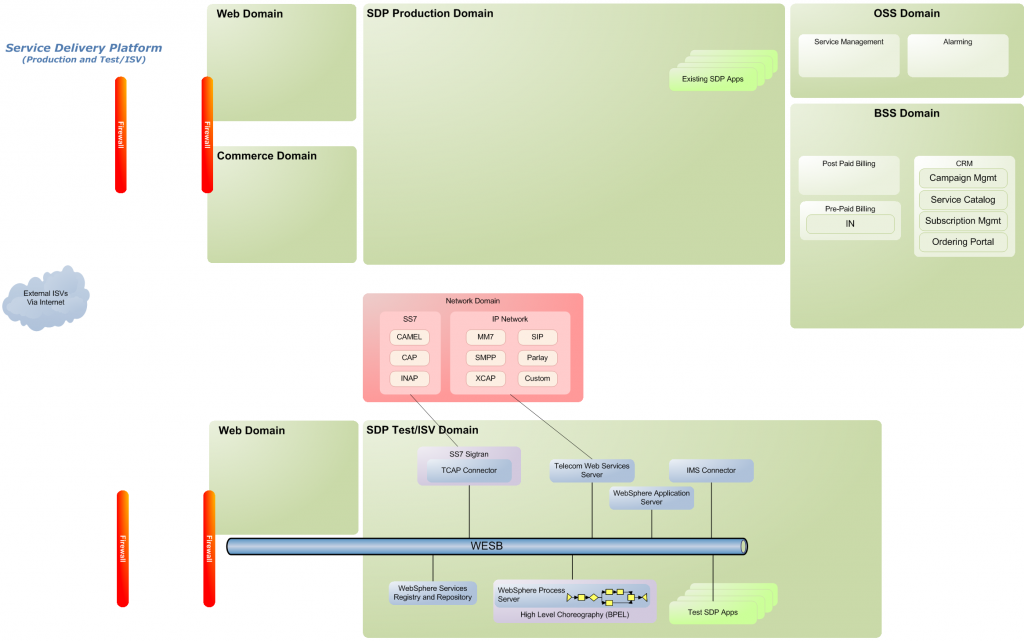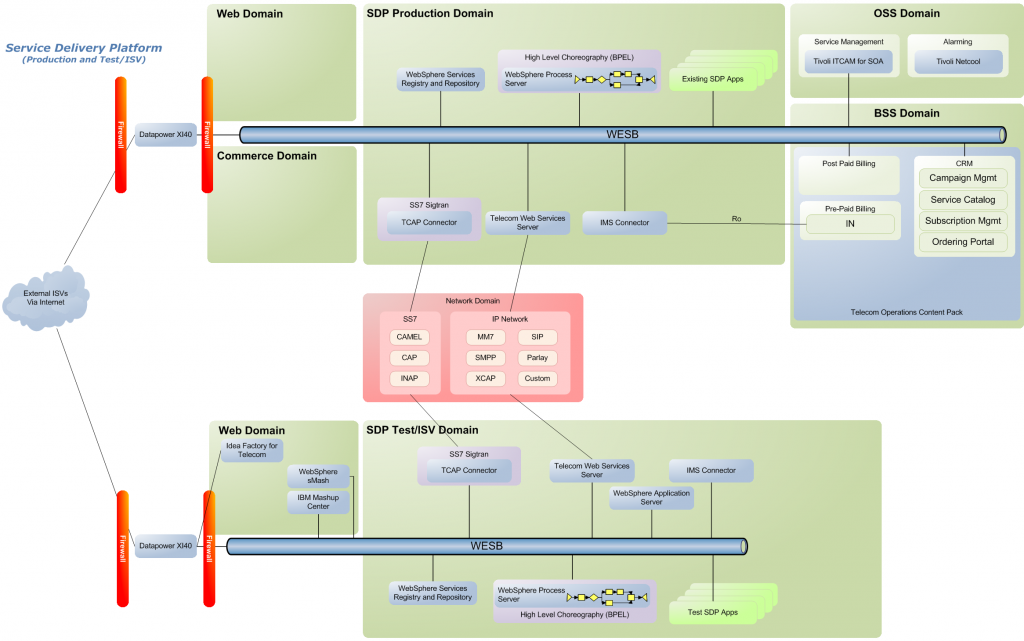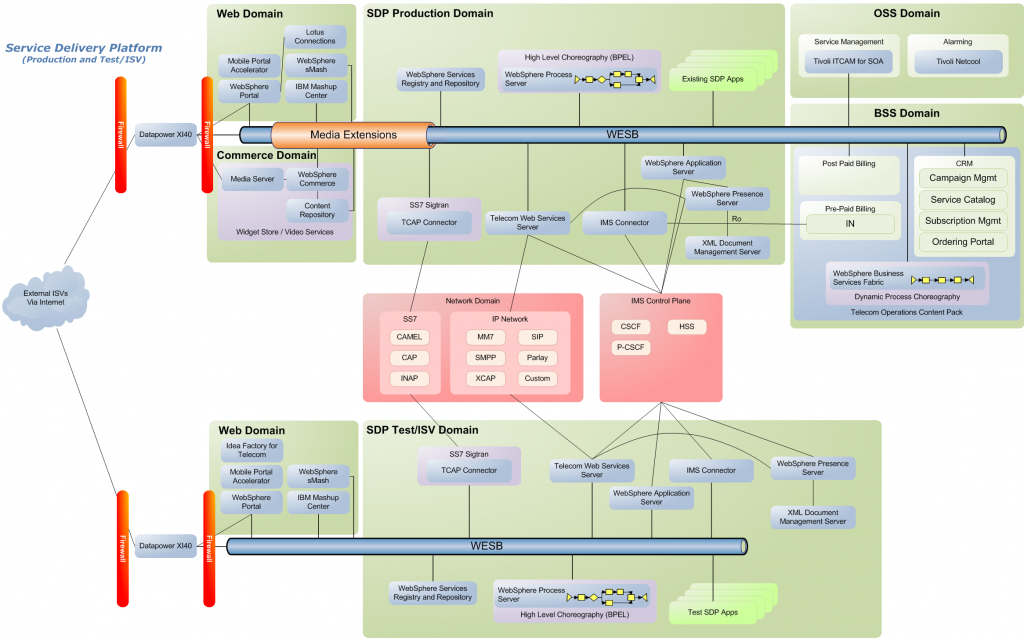Originally posted on 30Dec09 to IBM Developerworks where it got 9,113 Views
As I alluded to in my earlier post (Telcos capitalising on Social Networking tools), Telcos can use Social Networking tools to their advantage in a number of ways. I also mentioned the Idea Factory for Telecom – an adaptation of the basic Idea Factory offering now owned by Software Group Services for Lotus. This offering was originally put together by the High Performance On Demand Services (HiPODS) team and had no less than six servers minimally required for the offering. That is because the Idea Factory (or Innovation Factory as it was previously known but renamed due to trademark issues) was originally offered well before Lotus Connections was released. These days, small to medium implementations can be done with Lotus Connections, IBM Mashup Center and a number of templates and add-ons (widgets) for Connections. A Proof of Concept could potentially be done with a single server. Larger Idea Factory implementations – particularly where Telcos are hosting the service for their enterprise customers and MNVOs would also require a WebSphere Portal Instance as well.
Probably the best explanation I can give to you of the Idea Factory is for you to watch the recorded demonstration I have available below – in fact I have quite a number of variations of the same demo customised for different Telcos – the demo below the most recent which was recorded before Connections 2.5 was released and so was done with beta version of Connections – see if you can spot the fault in the video! I tried to cover it up as much as possible because I needed to show this video to customers, but it’s in there and you will see it if you know what you are looking for….
For online access to the latest Idea Factory (V2) recorded demo – just launch it below… Also note that this is a lower resolution version for online use. I also have a larger version that I used for offline demos, it is 24Mb in size so I will share that with anyone that requests it rather than make it generally available.
Way back in 2007, there was a good whitepaper about the Idea Factory – I have uploaded it to Collaboration_to_innovation-leveraging_web20.pdf. This document is now quite out of date with respect to the technology used to deploy the Idea Factory (then called the Innovation Factory) – these days, we would use Lotus Connections 2.5 as the base platform and add widgets for the polling/surveys requirement and set up activities templates to manage the ideation process, then use IBM Mashup Center rather than QED Wiki which was a IBM Research developed Mashup Environment (check youhtube.com – there are lots of QEDWiki demos available).

The Idea Factory for Telecom fosters collaboration by incorporating a self-service portal for consistent user experience and integration.
Aside from this limitation, the concepts expressed in the whitepaper and the usage of the Idea Factory remains relevant. I guess one point that this whitepaper makes it that IBM has been in this Web 2.0 game for a while now – longer than we have had Generally Available product to support the concepts.
If we look at the above diagram, Lotus Connections will take care of most of the Collaborative Services and the Portal (UI) requirements while IBM Mashup Center takes care of the Services Cluster and the Services Catalog (called the Widget Catalog in the Mashup Center).




